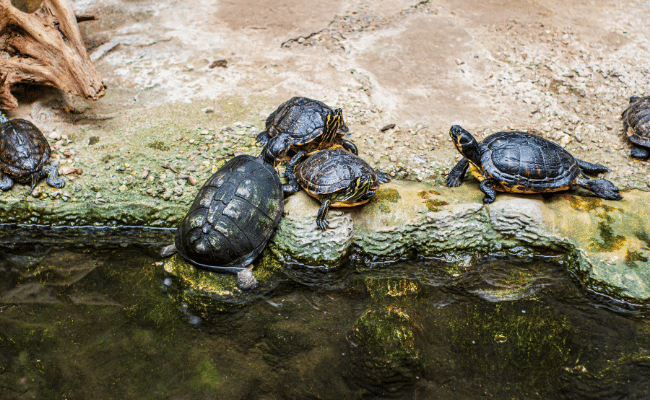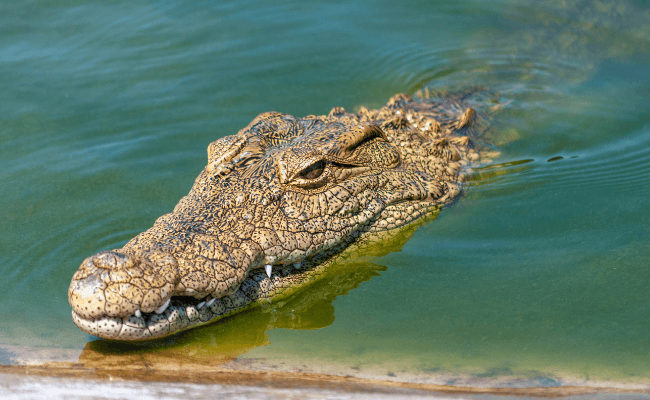
Table of Contents
Can tortoises swim in water?
Can Tortoises Swim, In short, tortoises can swim in the water. However, they cannot stay under the water for a long time as their shells are not designed to float on or support them in a horizontal position very well.
If a tortoise falls into deep water and is unable to get out by itself it will drown. Also, both land and aquatic turtles need to breathe air from the atmosphere so if there is any obstruction above such as a lid or something similar then they will also drown.
Many species of tortoises spend a lot of time in the water, especially during the wet season, to cool off and forage for food.
They are very good at swimming but there is no doubt it must be rather scary for them sometimes as they can get swept away by strong currents or even end up far from land in deep water where they cannot escape.
Can sulcata tortoises swim?
The answer is no. Sulcata tortoises can not swim, though they are very good at holding their breath for long periods of time.
Usually, sulcatas will see water and start to dig frantically in an attempt to escape, however, if you place one in a bathtub with just enough water so that he cannot reach the bottom with his feet, he should remain calm as this is what happens when it rains or during a bath time.
Sulcatas do not like swimming pools either because the high walls surrounding them give them a sense of being trapped and unable to escape from predators such as dogs.
However young sulcatas might enjoy romping about in a small kiddy pool on a warm day just for the sheer pleasure of getting out and walking about
Sulcatas can drown if they fall off a bank or a table, so make sure the surfaces are free from slippery materials.
Making a dry area around your pool is also helpful – tortoises HATE sitting in the wet substrate. In fact, keep all steps and tables completely dry as well.
If you find that you have made an area that is water-logged with puddles, sulcata’s will refuse to walk through it ever again which means more work for you!
You must also be very careful when placing your hands into the enclosure after bathing or during rainfall because these animals require very little time to suffocate so an accidental grab will not provide resistance and the air in the lungs will be expelled.

Can desert tortoises swim?
The answer to this question can desert tortoises swim/can tortoises swim? is No. Tortoises are land-based creatures and do not have the biological makeup to swim in water for an extended amount of time.
When a tortoise becomes submerged in a body of water, they will try their best to stay on top of the surface by flapping their shells around wildly. However, given enough time they will tire out and drown if they cannot reach the bank or safety.
Desert tortoises would benefit from being able to swim since they live in very hot climates where holes with standing water are scarce. A small minority of ancient desert tortoise species were known to adaptively evolve paddle-shaped feet that allowed them to dive headfirst into standing pools of rainwater during droughts when normal sources of groundwater became scarce.
Desert tortoises are, however, extremely talented diggers and can survive for lengthy periods of time in burrows dug down to the groundwater table.
In some cases, wild desert tortoises have been able to survive underground for up to a year on their bodily reserves while waiting out a drought period.
Can Russian tortoises swim?
This is frequently asked question can tortoises swim/can Russian tortoises swim? Answer is Yes, Russian tortoises can swim if placed in water. They are not as great a swimmer as a turtle but have been known to enjoy swimming.
We have received reports of people finding their Russian tortoise swimming across the pool or other bodies of water so they could climb out onto an island. Some owners will drop the tortoise into the pool as a way to introduce it to water and give it exercise at the same time.
In general, though, our experience has been that most Russian tortoises do not willingly spend any appreciable amount of time in water although some males seem very fond of soaking themselves regularly (for breeding purposes) by dropping into the water bowl!
Can gopher tortoises swim?
Many people have question can gopher tortoises swim/ can tortoises swim? The answer is Yes, Gopher Tortoises are quite capable swimmers. They can remain submerged underwater for several minutes.
During periods of drought when water holes in their habitat dry up, the gophers have been observed swimming across ponds that are too wide to wade through.
The tortoise walks into the water and breathes through its hind legs (up to 5 minutes), then swims at a brisk pace (averaging 6 miles an hour) using both front and back feet to paddle like a dog paddle. They also have been known to float out into a river and drift along with the current, breathing through their hind legs.
The gopher tortoise is a medium-sized land tortoise that lives in a network of tunnels dug in sandy soil. Its range includes most of the south-eastern United States from eastern Texas, Louisiana, and Arkansas up to southern New Jersey, northern Georgia, Alabama, Mississippi, and the Florida panhandle.
It will occasionally wander north of its natural range into the southern parts of Illinois, Indiana, Ohio, and Missouri and up into South Carolina. Sometimes you’ll see them in other parts of the country after they’ve been accidentally or intentionally introduced to non-native habitats.

Can giant tortoises swim?
The short answer of this question can giant tortoises swim/can tortoises swim? is Yes. Giant tortoises have been known to swim for a variety of reasons, such as reaching an island or goal during the breeding season.
During the 1800’s and early 1900s, there were many reports of giant tortoises surviving large periods underwater while crossing rivers.
There are also plenty of stories describing them intentionally burying themselves in mud to keep cool, waiting out rainstorms, and even floating across large bodies of water (see: Giant Tortoises: A Turtle’s Adventure by Alan White). So why would they be able to do it and we can’t? Because their shells evolved to make them perfect swimmers!
Their shell, which is made up of about 60 different bones originally came from the ribs of their ancestors. Reptiles are ectothermic, meaning that they rely on environmental heat sources to regulate their body temperature.
So, by nature reptiles are cold-blooded, needing the sun’s energy to move and digest food. This led them to evolve a shell that provided shade from the sun, protection from predators, and buoyancy at the water surface allowing them to easily keep their head up for breathing. Tortoises have even been seen floating comfortably in salty ocean water with only their eyes above water level!






